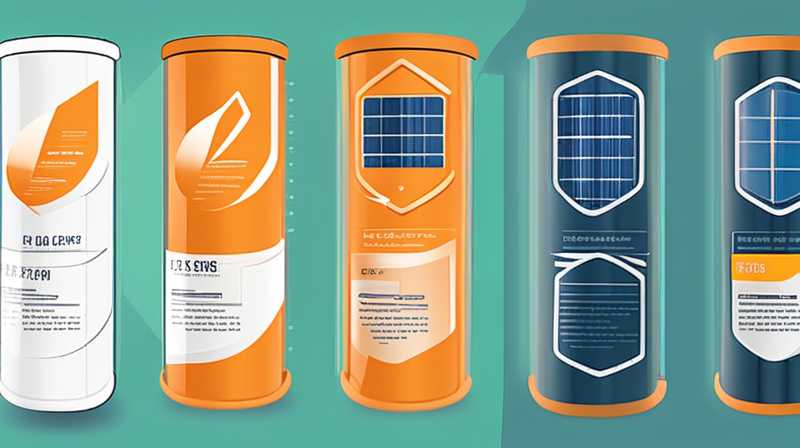
To effectively clean impurities in solar tubes, follow these steps: 1. Understand the types of impurities present in solar tubing, 2. Assess the cleaning methods suitable for different impurities, 3. Implement a maintenance schedule to prevent buildup, 4. Utilize appropriate cleaning materials and tools. It’s essential to frequently inspect the solar tubes as contaminants can greatly diminish their efficiency and overall performance.
1. UNDERSTANDING IMPURITIES IN SOLAR TUBES
Solar thermal systems, especially those relying on evacuated tubes, are particularly susceptible to a variety of impurities. These can originate from environmental factors such as dust, pollen, and airborne pollutants, which settle on the outer surfaces of the tubes. Understanding the implications of these impurities is crucial; they can significantly hinder the solar energy absorption capabilities of the system.
In addition to external contaminants, impurities can also arise from the fluid circulating within the tubes. Mineral deposits and sediment can accumulate within the pipes or the heat transfer fluid, thereby reducing efficiency. Regular monitoring is vital to determine the type of impurities affecting the system. Notably, contaminants may vary based on geographical location, climate, and surrounding infrastructure, so an adaptable approach to cleaning is recommended.
2. ASSESSING CLEANING METHODS
Once the types of contaminants are determined, a thorough assessment of the cleaning methods is necessary. Many approaches exist, including mechanical cleaning, chemical cleaning, and preventive maintenance techniques. Mechanical cleaning often involves scrubbing the tubes or using brushes designed for this purpose, whereas chemical cleaning typically requires specialized cleaning agents that dissolve or degrade impurities effectively.
Choosing the right method is paramount and can be influenced by the specific type of impurity detected. For example, if mineral buildup is identified, a more aggressive chemical cleaner might be necessary to penetrate and eliminate the deposits. It is essential to read and follow the manufacturer’s guidelines to ensure chosen methods do not damage the solar tubes or any integral components of the system. Furthermore, combining mechanical and chemical cleaning techniques can be more effective in tackling stubborn impurities.
3. IMPLEMENTING A MAINTENANCE SCHEDULE
An effective maintenance schedule should be established to prevent impurities from becoming a serious issue. Regular inspections, ideally every six months, enable users to catch buildup early and assess the general condition of the solar tubes. Inspections should carefully evaluate the outer and inner surfaces of the tubes, looking for signs of discoloration, dust accumulation, or other visible issues.
In addition to inspections, consider scheduling periodic deep cleanings—an intensive process where all tubes are thoroughly cleaned both externally and internally. It may also be wise to implement a washing system that uses water and mild detergents designed for solar panels. Moreover, establishing a seasonal cleaning routine can ensure that systems are cleaned before and after peak sunlight periods, maximizing efficiency throughout the year.
4. UTILIZING APPROPRIATE TOOLS AND MATERIALS
The selection of tools and cleaning materials plays a significant role in the effectiveness of the cleaning process. When cleaning the outer surfaces of the solar tubes, soft cloths or sponge-like materials are recommended to avoid scratching or damaging the glass. Avoid abrasive materials, which could inadvertently mar the surface and reduce light penetration.
For the internal cleaning of solar tubes, flushing systems utilizing high-quality detergents and water can be advantageous. Ensuring that your cleaning chemicals are eco-friendly not only safeguards the environment but also maintains system integrity. Various tools designed explicitly for solar equipment can streamline the cleaning process, making it easier to reach areas that are otherwise challenging.
FREQUENTLY ASKED QUESTIONS
WHAT TYPES OF IMPURITIES AFFECT SOLAR TUBES?
Various impurities can affect the efficiency of solar tubes, including dust, dirt, pollen, and mineral deposits. The external surface often accumulates dust and dirt, particularly in arid regions or during specific seasons. Internal impurities generally arise from the heat transfer fluid, which may develop mineral buildup over time. It’s crucial for solar tube users to regularly inspect both the outer and inner tube conditions and take preventative measures to maintain maximum efficiency.
HOW OFTEN SHOULD SOLAR TUBES BE CLEANED?
The frequency of cleaning solar tubes largely depends on factors such as location, weather conditions, and environmental influences. Generally, a thorough inspection should occur every six months, with cleaning implemented as necessary or at least once a year. In regions where dust storms are prevalent or in climates with high pollution levels, cleaning may need to be more frequent. Proactive maintenance ensures that the solar tubes function efficiently, and a scheduled routine aids in preventing stubborn buildup that could impair energy collection.
WHAT CLEANING PRODUCTS ARE SAFE FOR SOLAR TUBES?
When selecting cleaning products for solar tubes, the priority should be on using gentle, biodegradable detergents that won’t damage the glass or the surrounding environment. Avoiding harsh chemicals is essential to ensure the integrity of the tube materials. Look for products specifically marketed for cleaning solar panels or glass surfaces. Additionally, natural cleaning solutions, such as a mixture of vinegar and water, can offer an effective, environmentally friendly cleaning alternative. Always review the manufacturer’s recommendations to avoid potential damage during the cleaning process.
FINAL REMARKS
Cleaning solar tubes is a vital aspect of maintaining their efficiency and ensuring optimal energy harvesting. Establishing a routine that includes understanding the types of impurities, assessing suitable cleaning methods, implementing a reliable maintenance schedule, and utilizing appropriate tools is fundamental. Be proactive in addressing both external and internal contaminants to prolong the life of the solar system. Remember, impurities not only diminish performance but can lead to costly repairs over time. As such, judicious care and regular inspections should be prioritized. Each step towards a cleaner system will foster sustainability and improve the overall energy yield, contributing to environmental goals while supporting energy needs.
Original article by NenPower, If reposted, please credit the source: https://nenpower.com/blog/how-to-clean-impurities-in-solar-tubes/


